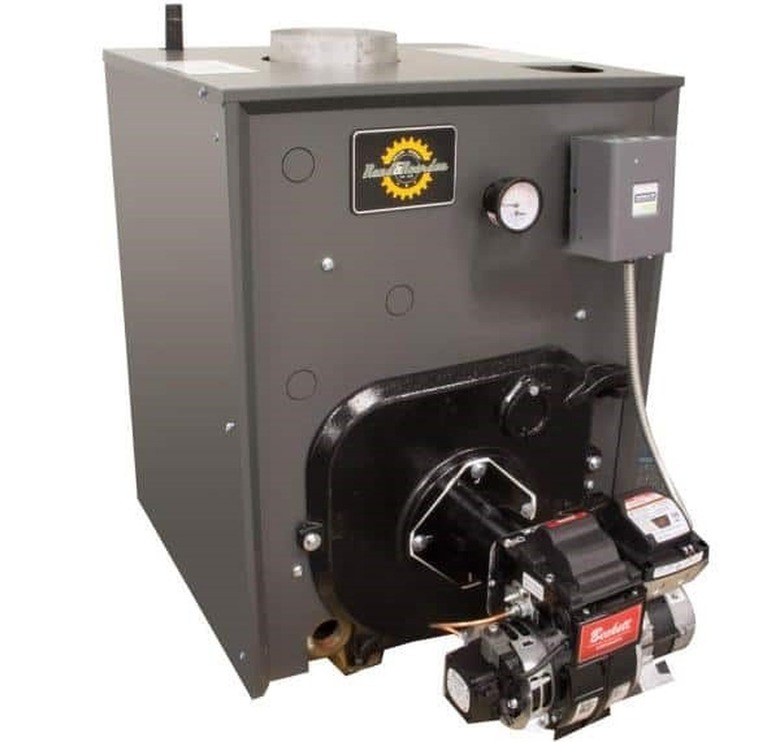Types Of Vents For An Oil Furnace
We may receive a commission on purchases made from links.
The venting of an oil furnace is the act of ridding the appliance of combustion gasses. Much like your car needs an exhaust pipe, an oil-burning appliance has an exhaust as well. This exhaust consists of the flue pipe and chimney and sometimes a sidewall vent. The International Mechanical Code (IMC) specifies what types of materials are used based on the temperatures venting for an oil furnace as well as how close the vent piping can be to combustible materials.
Chimneys and Oil Furnaces
Chimneys and Oil Furnaces
Chimneys are rated on the type of appliance they serve. For instance, a different chimney is used for a gas appliance than for an oil appliance. The height of the chimney and exposure to colder temperatures are factors that can determine the type of chimney you may need. If the chimney can't warm up, the result will be poor draft and your appliance won't vent properly. Likewise, if the chimney is too short, it won't draft well either.
All appliances need to flow exhaust, and this is known as draft. Draft is the movement of combustion air as well as the exhaust. This is a result of the difference in pressure between the outdoor pressure and the pressure in the chimney. The fact that hot air rises is the basis of how draft works. Poor draft in the chimney can have negative and expensive results.
Oil Furnace Chimney Requirements
Oil Furnace Chimney Requirements
Residential oil-burning appliances are considered low-heat appliances by the IMC due to the fact that the exhaust gas temperatures are below 1,000 degrees Fahrenheit. Typical flue gas temperatures of a modern oil heating appliance are around 350 to 500 degrees Fahrenheit depending on the efficiency of the appliance.
The requirements of a low-temperature appliance include using a connector rated for oil by the manufacturer. The chimney size shall have the same size vent as the appliance flue connection. The main concern is that there's a positive flow that's adequate to exhaust all combustion products to the outside.
Height is a concern in the requirements as well. The IMC states that a chimney vent must be at a minimum of 5 feet in vertical height above the highest connected flue collar. This minimum will aid in the positive flow, but a minimum of 10 feet is recommended by chimney professionals. Additionally, the chimney must also terminate a minimum of 2 feet higher than any portion of a building in a 10-foot surrounding area.
Different Types of Pipe Used for Exhaust
Different Types of Pipe Used for Exhaust
The pipe you should use to exhaust may vary depending on your situation. Single-wall pipe is the most commonly used oil-burning connection to a clay-lined brick or lined chimney. A lined chimney is a flexible pipe that goes inside a possibly damaged brick or clay chimney. This is an easy, inexpensive way to connect your oil furnace to the existing chimney, but it needs a minimum of 18 inches of clearance to combustibles. Another thing to consider is that the single-wall pipe needs to be at least 26 gauge steel for pipe that's 5 inches or smaller and 24 gauge for pipe that's 5 to 10 inches in diameter. The standard pipe sizes are usually 5 to 8 inches in diameter.
Although L-vent is expensive, it can have its benefits. An oil furnace using L-vent for exhaust can cut the clearance to combustibles in half to 9 inches. This can make going through a combustible wall and venting out the chimney possible. L-vent is used primarily for oil-burning appliances and isn't recommended for gas, whereas B-vent is primarily used for gas and can't be used for oil. There is one other type of piping that's rated for all fuels or triple-wall pipe and this may be the best route for most applications.
Venting Through a Wall
Venting Through a Wall
Venting your oil furnace isn't as simple as just sticking a vent pipe out the side of a house. There are mechanical devices known as power venters that safely remove the flue gasses from the appliance. Another possibility is that some oil-fired appliances are designed and rated to direct vent. This is typically in an oil-fired boiler application and isn't as common in oil-fired hot air systems.
Before you make any decisions on the type of chimney or flue piping you use, be sure to read the manufacturer's specifications sheet and make sure that it will work for your situation. Check with your local building official or a professional for the safety of you and your home.
